Ultrafast X-ray Group
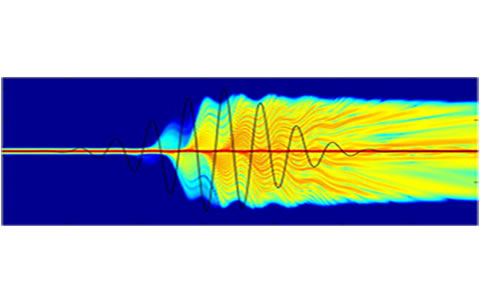
The Ultrafast X-ray group works on the generation and uses of XUV and soft X-ray radiation using high energy femtosecond laser pulses. The X-rays are produced using high harmonic generation, a process which uses electron ejection and recombination to produce very short (attosecond) pulses of light.
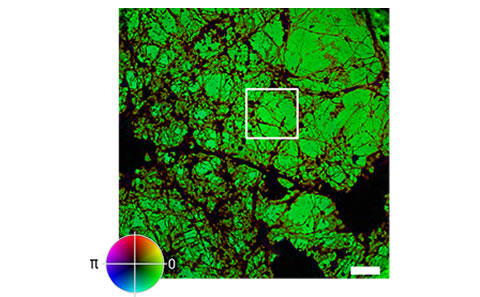
Calculation of the electron density of a simple atom during the high harmonic generation process
Soft X-ray radiation has many important uses. Its short wavelength makes it ideal for high-resolution microscopy. Many chemicals have absorption edges in the soft X-ray region, making it an important area for spectroscopy.
Finally, the time resolution available from the generated pulses gives us the overall possibility of femtosecond time resolution and nanometer spatial resolution within the same instrument, which opens whole areas of exciting new science.
The research effort in this area is multi-disciplinary. Within the ORC we collaborate with theory experts such as Dr Peter Horak, and in development of new femtosecond sources (Jon Price, David Richardson). The group has a strong collaboration with the School of Chemistry (Prof Jeremy Frey, Dr. Russell Minns), where X-ray scattering using more traditional sources is a long-standing and prestigious research area (the National Centre for X-ray crystallography is based in Southampton Chemistry). More recently, we are building collaborations with the Institute for Life Sciences in biological imaging (John Chad, Katrin Deinhart).
Computational Imaging: Key to the process of soft X-ray microscopy with HHG sources is the use of phase retrieval techniques. These are computer algorithms that allow us to generate an image without the use of an objective lens. The scattered light from the illuminated object is collected, and the phase information necessary to recreate an image of the object, lost during the collection process, is recreated using an iterative algorithm. These techniques are extremely powerful, and will become very important in all forms of microscopy. We are collaborating with the School of Physics & Astronomy (UoS) in applying these techniques to soft X-ray microscopy.
Key research breakthroughs:
•XUV microscopy of mouse neurons using transmission ptychography: this is the first example of XUV transmission ptychography using an HHG source. A resolution of ~50 nm was achieved, showing detail of the neuronal structure unavailable from optical images.
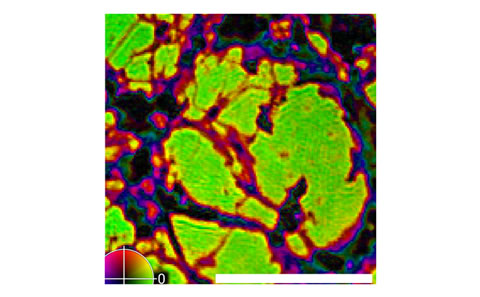
14 day old mouse hippocampal neurons, samples courtesy of Jo Bailey & John Chad,Biological Sciences, UoS. Scale bar is 5 µm
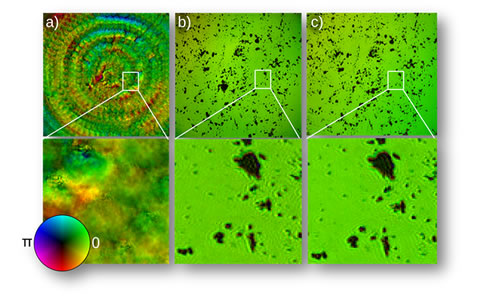
• Orthogonal probe relaxation as a widely-applicable error correction technique in ptychography
• First use of High harmonic radiation to determine new material properties
• Spectral and spatial characterization of XUV beams
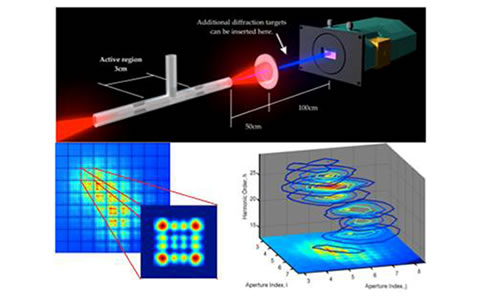
Impact of research:
The ability to produce an ultrafast coherent X-ray source in the lab, rather than having to use a large facility such as a synchrotron makes possible many experiments that would otherwise be impossible.
In particular, the possibility of effective lab-based soft X-ray imaging may be very important in the area of life sciences, where the ability of X-rays to form high-resolution images and also penetrate through water-based materials allows imaging inside microscopic structures such as cells or organelles within cells.
Research Facilities:
The generation of soft X-rays using ultrafast lasers requires very high energy, very short laser pulses. Our present laser system produces pulses that are 35fs long, with an energy of 3mJ, equivalent to a peak power of ~0.1TW.
The generated XUV radiation has wavelengths in the region of 15-30nm, with pulse energies of ~1nJ. The beam generated is spatially coherent, with a divergence of ~1 mrad.
Collaborations:
Internal (ORC and UoS):
ORC collaborators:
• David Richardson
• Jonathan Price
• Peter Horak
Chemistry collaborators:
• Prof Jeremy Frey
• Dr Russell Minns
Physics & Astronomy collaborators
• Dr. Dr. Pierre Thibault
IfLS collaborators:
- Dr. John Chad
- Dr Katrin Deinhardt
- Dr Jo Bailey
Academic:
- Prof Larissa Juschkin, RWTH Aachen (Joint PhD Program)
- Prof Piergiorgio Nicolosi, University of Padua (Joint PhD program)
- Prof John Costello, DCU (Joint PhD program)
- Dr Ana de Paula, University Minas Gerais, Brazil
The group also works regularly at the Artemis laser facility at RAL, and recently has worked at Beamline I13L at the Diamond Synchrotron.
Work with us:
Please contact Dr Bill Brocklesby if you would like any further information about the work of our Ultrafast Laser X-Ray Group or would be interested to work with us.